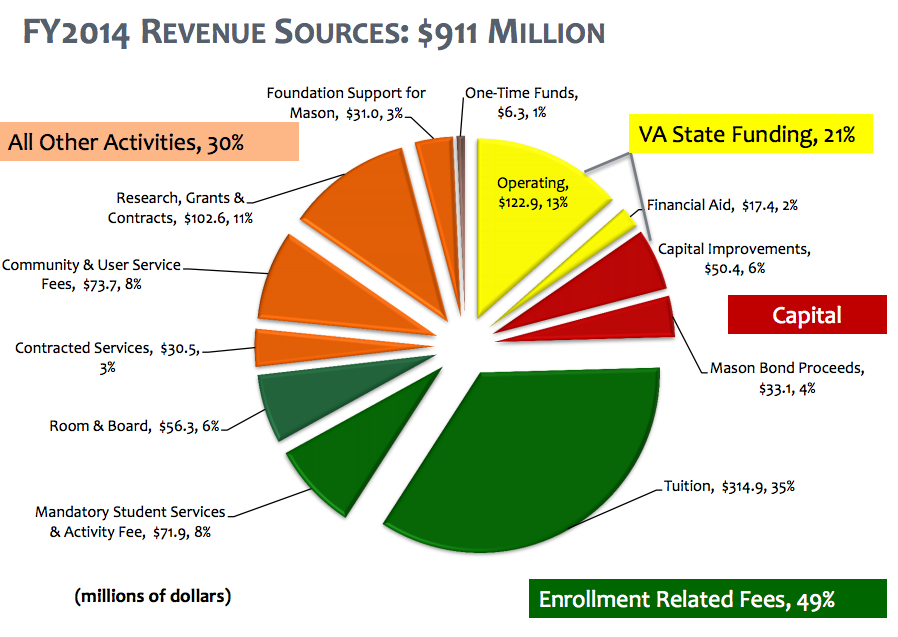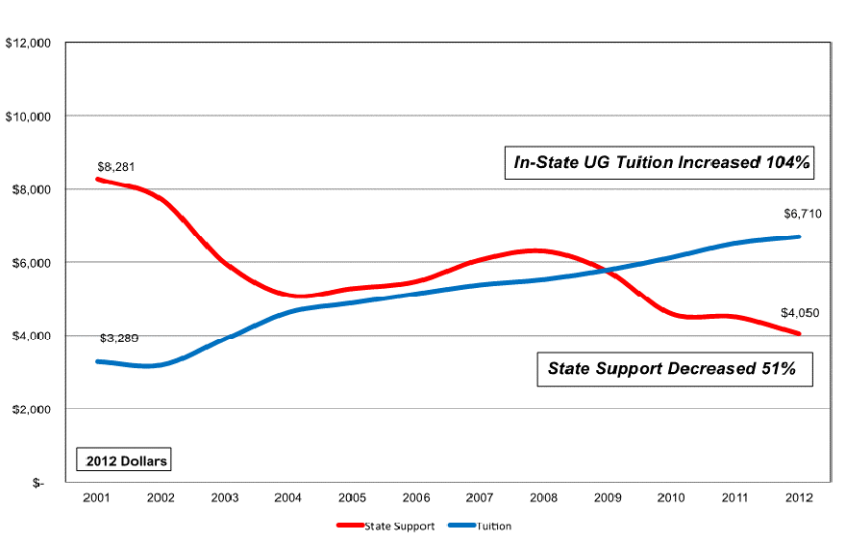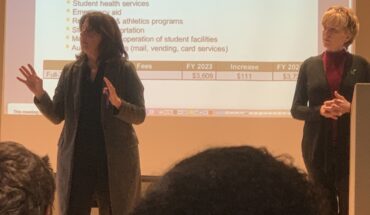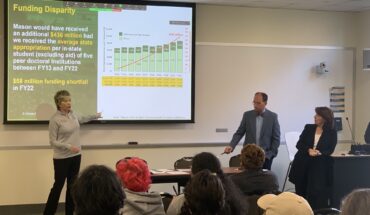What is tuition?
Tuition is how much you pay for education at Mason.
How is it charged?
Tuition is charged by credit and by your status of enrollment.
For example, in the 2013-2014 academic year, in-state undergraduate students had to pay $292.50 per credit hour, or about $4,300 each semester for a full-time student.
Does this include fees?
Nope. Apart from tuition, the other cost of enrolling at Mason is included in fees. Of Mason’s total $911 million budget, eight percent (or $71.9 million) comes from mandatory fees.
How does Mason determine its tuition rates?
Many different factors go into determining tuition rates, including enrollment, state funding, and spending. If Mason enrolls 100 more students than it did last year, then that’s 100 more students that need to be taught in classrooms, fed, and possibly housed. While enrollment has costs, it also means there will be 100 more tuition-payers than last year. To set tuition, administrators weight the costs and revenue that each of these factors have on the operating budget of the university.
How much does Mason receive each year in tuition?
For the 2014 fiscal year, Mason received $314.9 million from tuition, which accounts for about 35 percent of its total revenue.

Mason receives 35 percent of its total budget from tuition. (Photo courtesy of Mason Office of Budget and Planning.)
Why is tuition increasing?
As a public university, Mason receives a chunk of money from Virginia to fund its operating costs. In 1985, Virginia funded over 65 percent of Mason’s educational costs. Today it funds just 25 percent. As this source of money decreased, Mason has had to increase tuition to cover those costs.

As Mason continues to grow, Virginia has decreased its contribution to the university, which push tuition prices up. (Photo courtesy of Mason’s Office of Budget and Planning.)
But there are other reasons why the cost of attending Mason. For example, the university has said that it wants to boost its research credentials by bringing in more funds for research, hiring more faculty and incorporating research into undergraduate education. All of those goals have costs. Investing in labs and hiring skilled faculty can all drive up the cost of education at Mason.
Where can I learn more?
Mason’s budget website has a ton of information about tuition rates, faculty salaries and other data sets.
Wait, I have more questions!
Let us know! Email GMUFourthEstate@gmail.com.


